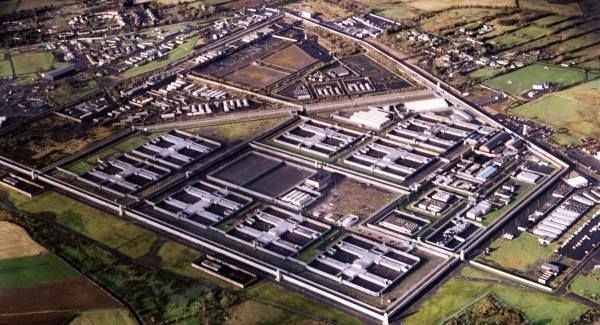Fight Racism! Fight Imperialism! 89 September 1989

Out of the Maze by Derek Dunne. Gill and Macmillan, 170pp., £5.95, 1988.
Out of the Maze is the story of how the IRA pulled off the impossible. Like the ‘unsinkable’ Titanic, the Maze/Long Kesh prison was built of watertight compartments. Each of the 8 H-blocks a prison within a prison, beyond the blocks a further two sealed compounds, a double ‘airlock’ main gate stood between the prisoners and the countryside beyond.
Basing his book on the accounts of a number of participants, Derek Dunne has produced a lively narrative of a truly epic event (the largest breakout in Europe since the Second World War) without losing sight of the political context amidst the drama. The significance of the escape is explained in terms of the current phase of the struggle for Irish freedom. The planning of the escape took place at a time when the movement had been suffering a number of setbacks. The supergrass strategy was in full swing. Not only were scores of people suffering internment by remand, but many had also been convicted on the word of paid perjurers such as Christopher Black and Raymond Gilmour. The aim of this strategy was to put Republican activists behind bars.
In 1983 British strategy received two devastating blows. As Belfast street murals put it, ‘Lean comes clean’. In October ‘supergrass’ Robert Lean retracted at a Sinn Fein press conference, having given his RUC Special Branch minders the slip and driven off in their car. The same Belfast walls were still freshly painted from the month before celebrating ‘Meals on wheels for 38’. The IRA had taken control of H-Block getting 38 republican prisoners out on the daily food lorry.
This book is very revealing, not only in terms of the ingenuity and organisation of the IRA, but also in terms of the nature of the prison-struggle in the period following the defeat of the 1980/81 hungerstrikes. Dunne shows how the British administration was forced to recognise the Republican command structure which remained solid throughout, how the British authorities were outmanoeuvred in their attempts to end segregation of republican prisoners, and how ending the no-work protest was used to gain access to the workshops either to disrupt them or use them for the prisoners’ own purposes.
The collaboration of the 26-County state is highlighted. Those who were not recaptured within a short space of time (about half of the escapees) have had to stay on the run. The 26-County neo-colonial state has even handed back Paul Kane. With the recent collapse of Christopher Black’s evidence, he should have been a free man, but the 26-County neo-colonialists have sent him back to the Six Counties on the sole charge of escaping from a sentence that has been quashed.
Dunne reckons these people have played an important role in reorganising the IRA, allowing it to step up its activity again after a period of heavy blows from the RUC and British Army. His examples are convincing. Padraig McKearney in particular was involved with developing the strategy of targetting isolated RUC barracks so that a ‘third phase’ of the struggle could be achieved in which isolated pockets of resistance could be held. Between January 1984 and the end of 1986, 70 such attacks were mounted.
However, Gerry Kelly, one of the escapees, recently told FRFI that he would see the significance of the escape differently: ‘It had a great political impact … the morale among nationalists was low and the escape did a lot to change that. It showed that prisoners and the Republican Movement could, in a period when things were bad, hit the Brits back in a place where they felt safest.’
But as to the role of individuals: ‘I could think of people who got out who had a great effect on the movement, but if the insinuation is that the Republican Movement really needed them, the movement has gone on for a very long time and has lost a lot of its best people through assassination, hunger strikes or into gaol. We are a confident people. There is no one person who is not expendable in the sense that we cannot do without them.’
Some of the escapees have fallen victim to Britain’s shoot-to-kill strategy. On 8 May 1987 Padraig McKearney died during the 22nd attack that year. All eight IRA men were shot dead by the SAS at Loughgall RUC barracks. Most of Britain’s assassinations have gone unnoticed outside of the Six Counties, contracted out to Loyalist murder-gangs supplied with all the necessary details from military intelligence or the RUC to carry them out. One such assassination was the shooting of Larry Marley – Papillon – who masterminded the Escape from the Maze, an utterly selfless act in which he could not directly participate. The character-study here of Larry Marley is a monument to the calibre of the politics and people involved in the IRA, and the description of his funeral a testimony to the political level and determination of the nationalist people whose cutting edge is the armed campaign of the IRA against the British occupation forces.




